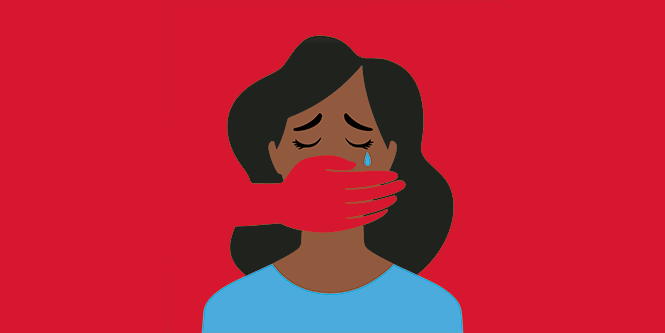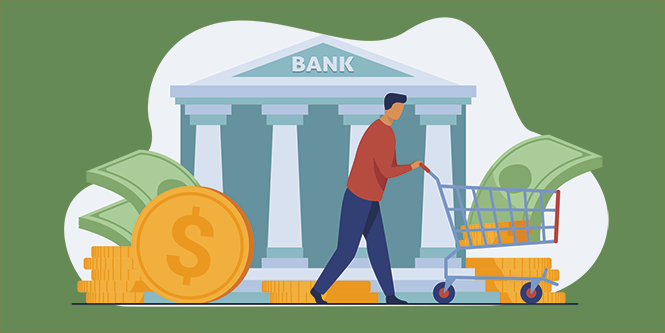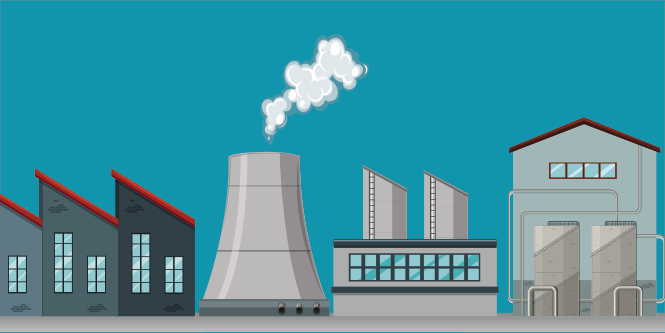
- Derek Carlisle
This is the third and final installment of Project Censored's annual list of most significant news that's somehow not fit to print. As noted in previous installments, censorship in an authoritarian society is obvious, from a distance, at least. There is a central agent or agency responsible for it, and the lines are clearly drawn.
That's not the case in America, yet some stories rarely, if ever, see the light of day. The media erasure is part of a system of targeting and marginalization. While journalists everyday work hard to expose injustices, they work within a system where some injustices are so deeply baked in that stories exposing them are rarely told and even more rarely expanded upon to give them their proper due.
That's where Project Censored comes in. Since 1976, its role has been to "explore and publicize the extent of news censorship in our society by locating stories about significant issues of which the public should be aware, but is not, for a variety of reasons," wrote its founder Carl Jensen on its 20th anniversary.
Thus, the list of censored stories that's the centerpiece of its annual book, State of the Free Press 2021, doesn't just help us to see individual stories we might otherwise have missed. It helps us see patterns—of censorship and suppressed stories, and how those stories fit together.
In Part I, published in City Weekly's Dec. 24, 2020, issue, the Top 10 list noted the lack of coverage about Missing and Murdered Indigenous Women and Girls (MMIWG), the targeting of journalists and activists by Monsanto "Intelligence Center," and how the U.S. military has become a massive contributor to climate crisis.
Part II, published in City Weekly's Dec. 31 issue, highlighted the lack of media coverage of congressional investments and conflicts of interest, how the growing gap between richest and poorest Americans is impacting longevity, and how a shadow network of conservative outlets is undermining faith in local news.
If the previous and the following Part III summaries leave you hungry for more, Project Censored has all that and more waiting for you in State of the Free Press 2021.
Underreporting of Missing and Victimized Black Women and Girls
Black women and girls go missing in the United States at a higher rate than that of their white counterparts. And, that very fact goes missing, too.
"A 2010 study about the media coverage of missing children in the United States discovered that only 20% of reported stories focused on missing Black children despite it corresponding to 33% of the overall missing children cases," Carma Henry reported for the Westside Gazette in February 2019.
But it's only getting worse. "A 2015 study discussed in the William & Mary Journal of Race, Gender, and Social Justice found that the disparity listed in the 2010 study between the reportage and the reality of missing Black children had increased substantially," Project Censored noted. In fact, the ratio is now 35% of missing children cases vs. just 7% of media stories.
That discussion appeared in a paper that made two other pertinent points: First, that Black criminal perpetrators are over-represented in the media, while Black victims are underrepresented, and second, that "because racial minorities are identified as criminals more often than not, non-minorities develop limited empathy toward racial minorities who are often perceived as offenders."
"Media coverage is often vital in missing person cases because it raises community awareness and can drive funding and search efforts that support finding those missing persons," Project Censored noted.
In October 2019, "The Atlanta Black Star shed light on perhaps the most prolific offender against Black women and girls in recent history, Jason Roger Pope, who has been indicted on charges relating to human trafficking and child sex crimes," Project Censored wrote. "Pope, a white South Carolina promoter and popular disc jockey better known as DJ Kid, has made claims suggesting he may have participated in the trafficking, assault and/or rapes of nearly 700 African American girls—primarily underage—right up until his arrest in August 2019."
The arrest didn't come out of the blue.
"Pope has police records going as far back as 2011 relating to sexual misconduct with minors. Yet, outside of a few local news outlets, the corporate media has been silent on Pope's crimes."
Blacks are also over-represented as victims of sex trafficking, according to statistics from Human Trafficking Search: They account for more than 40% of confirmed victims compared to 13.1 percent of the population.
While there is some coverage from small independent sources, "this gap in coverage of missing Black women and girls has gone widely underreported," Project Censored noted.
It cited two exceptions (one from ABC News, another from CNN). "But, broadly, U.S. corporate media are not willing to discuss their own shortcomings or to acknowledge the responsibilities they neglect by failing to provide coverage on the search for missing and victimized Black women and girls."

- Freepik
The Public Banking Revolution
The year 2019 marked the 100th anniversary of the United States' first publicly owned state bank, the Bank of North Dakota (BND), and in October, California Gov. Gavin Newsom signed the Public Banking Act, authorizing up to 10 similar such banks to be created by California's city and county governments. In response, the cities of San Francisco and Los Angeles both announced plans to do so. It was the culmination of a decade-long effort that began in the wake of the Great Recession that's also been taken up in nearly two dozen other states. Beyond the benefits North Dakota has reaped in the past, such banks could have greatly assisted in responding to COVID-19's economic devastation and could yet help fund a just transition to a decarbonized future, along the lines of a Green New Deal.
Yet, despite California's agenda-setting reputation, Project Censored notes that, "No major corporate media outlets appear to have devoted recent coverage to this important and timely topic."
"The Bank of North Dakota was founded in 1919 in response to a farmers' revolt against out-of-state banks that were foreclosing unfairly on their farms," Ellen Brown, founder of the Public Banking Institute wrote for Common Dreams. "Since then, it has evolved into a $7.4 billion bank that is reported to be even more profitable than JPMorgan Chase and Goldman Sachs, although its mandate is not actually to make a profit but simply to serve the interests of local North Dakota communities."
"The state of North Dakota has six times as many financial institutions per capita as the rest of the country, and it's because they have the Bank of North Dakota," Sushil Jacob, an attorney who works with the California Public Banking Alliance told The Guardian. "When the great recession hit, the Bank of North Dakota stepped in and provided loans and allowed local banks to thrive."
As a result, "North Dakota was the only state that escaped the credit crisis," Brown told Ananya Garg, reporting for Yes! magazine. "It never went in the red, [had] the lowest unemployment rate in the country, the lowest foreclosure rate at that time."
"There are two ways in which a state bank can fund state investment for a greener future," Eric Heath wrote in an op-ed for The Hill. "First, the bank can provide loans, bonds and other forms of financing for investments to the state government and private organizations on better terms than those available in regular markets."
Some such projects might not even be considered. This is not because green investments are unprofitable, "but because their profits slowly accumulate and are widely shared across a community," Heath explained. "Second, a public bank will improve a state's fiscal health. By holding state deposits as assets, the bank's profits can be returned to state coffers to fund direct state investment. Additionally, the activity of the state bank—which will prioritize investing state assets and extending credit within the state for the benefit of the state—will improve the state economy," just as has happened in North Dakota.
A new surge of interest in public banking came out of the Standing Rock movement's Dakota Access Pipeline protests. While individuals could easily withdraw from doing business with fossil fuel-financing banks—Wells Fargo, in this case—governments have no such similar options to meet all their banking needs.
In short, "From efforts to divest public employee pension funds from the fossil fuel industry and private prisons, to funding the proposed Green New Deal, and counteracting the massive, rapid shutdown of the economy caused by the COVID-19 pandemic, public banking has never seemed more relevant," Project Censored wrote.
It's a time-tested practical solution the corporate media refuses to discuss.

- Freepik
Rising Risks of Nuclear Power Due to Climate Change
As early as 2003, 30 nuclear units were either shut down or at reduced power output during a deadly summer heat wave in Europe.
But almost two decades later, the corporate media has yet to grasp that "nuclear power plants are unprepared for climate change," as Project Censored notes. "Rising sea levels and warmer waters will impact power plants' infrastructure, posing increased risks of nuclear disasters, according to reports from the Natural Resources Defense Council (NRDC) and Truthout from September 2019," they explain. Yet, "Tracking back to 2013, corporate news media have only sporadically addressed the potential for climate change to impact nuclear power plants."
"Nuclear power is uniquely vulnerable to increasing temperatures because of its reliance on cooling water to ensure operational safety within the core and spent fuel storage," Christina Chen wrote for NRDC.
In addition, Karen Charman, reporting for Truthout, noted that "nuclear reactors need an uninterrupted electricity supply to run the cooling systems that keep the reactors from melting down," but this will be "increasingly difficult to guarantee in a world of climate-fueled megastorms and other disasters."
Sea level rise—combined with storm surges—represents the most serious threat. That was the focus of a 2018 report by John Vidal from Ensia, a solutions-focused media outlet, that found "at least 100 U.S., European and Asian nuclear power stations built just a few meters above sea level could be threatened by serious flooding caused by accelerating sea-level rise and more frequent storm surges."
There have been more than 20 incidents of flooding at U.S. nuclear plants, according to David Lochbaum, a former nuclear engineer and director of the nuclear safety project at the Union of Concerned Scientists.
"The most likely [cause of flooding] is the increasing frequency of extreme events," he told Vidal.
Yet, in January 2019, the U.S. Nuclear Regulatory Commission, or NRC, decided to weaken staff recommendations to reassess the adequacy of hazard preparations. In dissent, Commissioner Jeff Baran wrote that NRC would allow power plants "to be prepared only for the old, outdated hazards typically calculated decades ago when the science of seismology and hydrology was far less advanced."
"As of September 2019, 444 nuclear reactors are operating in the world, with 54 under construction, 111 planned and 330 more proposed," Charman reported.
"Many of the world's new nuclear plants are being built on the coasts of Asian countries, which face floods, sea-level rise and typhoons," Vidal wrote. "At least 15 of China's 39 reactors in operation, and many of the plants it has under construction, are on the coast."
"Nuclear stations are on the front line of climate change impacts both figuratively and quite literally," leading climate scientist Michael Mann told Vidal. "We are likely profoundly underestimating climate change risk and damages in coastal areas."

- Freepik
Revive Journalism With a Stimulus Package and Public Option
In late March, Congress passed, and President Trump signed, a $2.2 trillion coronavirus rescue package, including direct payments of $1,200 per adult and more than $500 billion for large corporations. Before passage, Craig Aaron, the president of Free Press, argued that a stimulus package for journalism was also urgently needed. "In the face of this pandemic, the public needs good, economically secure journalists more than ever," separating fact from fiction, and holding politicians and powerful institutions accountable," Aaron wrote in the Columbia Journalism Review.
Aaron's organization, Free Press, placed journalism's needs at $5 billion in immediate emergency funds, "less than half of 1% of a trillion-dollar recovery package" and asked that "Congress put a foundation in place to help sustain journalism over the long term."
Aaron presented a three-pronged plan: First, "Doubling federal funds for public media," not for Downton Abbey reruns, but "earmarked specifically for emergency support, education, and especially local journalism." For example, "The Los Angeles Unified School District teamed up with PBS SoCal/KCET to offer instruction over the airwaves while kids are out of school, with separate channels focused on different ages."
Second, "Direct support for daily and weekly newsrooms," which have lost tens of thousands of jobs over the past three decades. "Direct, emergency subsidies of say $25,000 per newsgathering position could make sure reporters everywhere stay on the local COVID beat," he wrote. "Just $625 million would help retain 25,000 newsroom jobs."
Third, "New investments in the news we need.... for a major investment in services that provide community information [and] to support new positions, outlets and approaches to newsgathering, [which could] prioritize places and populations that the mainstream outlets have never served well."
Arguing that a "resilient and community-centered media system" is necessary to get through the pandemic, Aaron concluded, "Now is the time to act. We need significant public investments in all corners of the economy, and journalism is no exception."
In an article in Jacobin, media scholar Victor Pickard advanced a more robust proposal, for $30 billion annually (less than 1.4% of the coronavirus stimulus package, Project Censored noted).
"On the question of cost, we must first remind ourselves that a viable press system isn't a luxury—it's a necessity," he wrote. "Similar to a classic 'merit good,' journalism isn't a 'want,' but a 'need.... Democratic nations around the globe heavily subsidize the media while enjoying democratic benefits that put the U.S. to shame."
Writing for The Guardian, just after the McClatchy newspaper chain bankruptcy was announced, Pickard noted that, "For many areas across the U.S., there's simply no commercial option. The market has failed us." And thus, "With market failure, journalism's survival requires public options."
The need was fundamental. "All foundational democratic theories—including the First Amendment itself—assume a functional press system. The fourth estate's current collapse is a profound social problem," he writes.
And he suggests a broad range of funding possibilities: "We could raise funds from taxing platforms like Facebook and Google, placing levees on communication devices and repurposing international broadcasting subsidies. Other sources include spectrum sales and individual tax vouchers. We could leverage already-existing public infrastructures such as post offices, libraries and public broadcasting stations to provide spaces for local news production."
Project Censored concurred, writing, "While corporate news outlets have reported the ongoing demise of newspapers and especially local news sources, they have rarely covered proposals such as Aaron's and Pickard's to revitalize journalism through public funding."
This is Week 3 of a three-part feature. Author Paul Rosenberg is an activist turned journalist who has written for the Christian Science Monitor, Los Angeles Times, Denver Post, Al Jazeera English, salon.com and numerous other periodicals. He has worked as an editor at Random Lengths News since 2002. Send comments to editor@cityweekly.net.